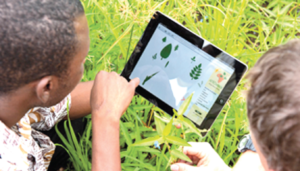
December 5, 2018ACRE ‘s analytics solution for agriculture, is growing!
It typically crunches through thousands of variations of crop, market, and geographic data for insights on yields, prices, and investment opportunities. ACRE clients include large farms, national governments, food companies, and agriculture-input businesses, such as seed and fertilizer producers.
David Fiocco is one of the cofounders of ACRE, which started about three years ago. “We built it out of necessity as our teams struggled to collect information for clients,” he says.
“To do an analysis on corn exports for a Sub-Saharan African country, say, would take weeks, as teams of experts would pore through documents from ministries of agriculture and academic reports and travel extensively to see farmers.”
“Not only was it extremely laborious, but we struggled to feel like the data were truly comparable,” David remembers.
Meanwhile, a data and analytics revolution has been stirring in the agriculture industry—allowing the use of new types of data never before available.
Fast forward to today: we’ve just added 121 weather-data variables to the ACRE mix.
“We can access terabytes of data from NASA and the National Oceanic and Atmospheric Administration (NOAA), plus data from private sources, using a near-real-time download system that we developed,” explains Ryan McCullough, the solution leader.
The data are stored and transformed into usable formats, and include factors such as soil and atmosphere temperature, wind speed, cloud cover, and dew points. These values are available to within ten kilometers of any point in the United States and 20 kilometers of points around the world.
With these new data, ACRE can analyze the many ways in which short- and long-term weather can influence outcomes for our clients. These results help them make decisions they could not make before.
For example, midseason crop stress is a critical factor for wheat yield. Using a combination of precipitation and humidity data, our experts have created a proprietary agronomic index that can predict, with 96% accuracy, crop yields for durum wheat in North America two months before the crop is even harvested.
In another scenario, ACRE can help predict drought in an upcoming season—an insight that can aid local relief agencies in effectively deploying resources.

…our experts have created a proprietary agronomic index that can predict, with 96% accuracy, crop yields…
The ACRE team has doubled in size this year to more than 30 people, including data scientists, agronomic experts, and former commodity traders.
Team members still collect information directly from farmers—such as data on production costs for more than 30 crops—including spend on seeds, fertilizer, and labor and yield levels—using a consistent global methodology. This information is combined with geospatial and commodity data sets, integrated with proprietary insights such as our cost curves, and analyzed through machine-learning models.
“We’re able to predict yields and market prices with a high degree of accuracy,” Ryan explains. “We use these analytics most frequently in specialty crop markets, which are less transparent than highly traded commodities, to help clients both plan when to harvest their crops and, for food companies, identify the right time to buy ingredients for their manufacturing business. We can identify an average of 5 percent direct cost-savings potential.”
“I haven’t had a client request in the past couple of years where ACRE wasn’t part of the value proposition,” says Lutz Goedde, a senior partner. “Within 24 to 48 hours, we can develop a client-specific analysis.”
mckinsey.com


